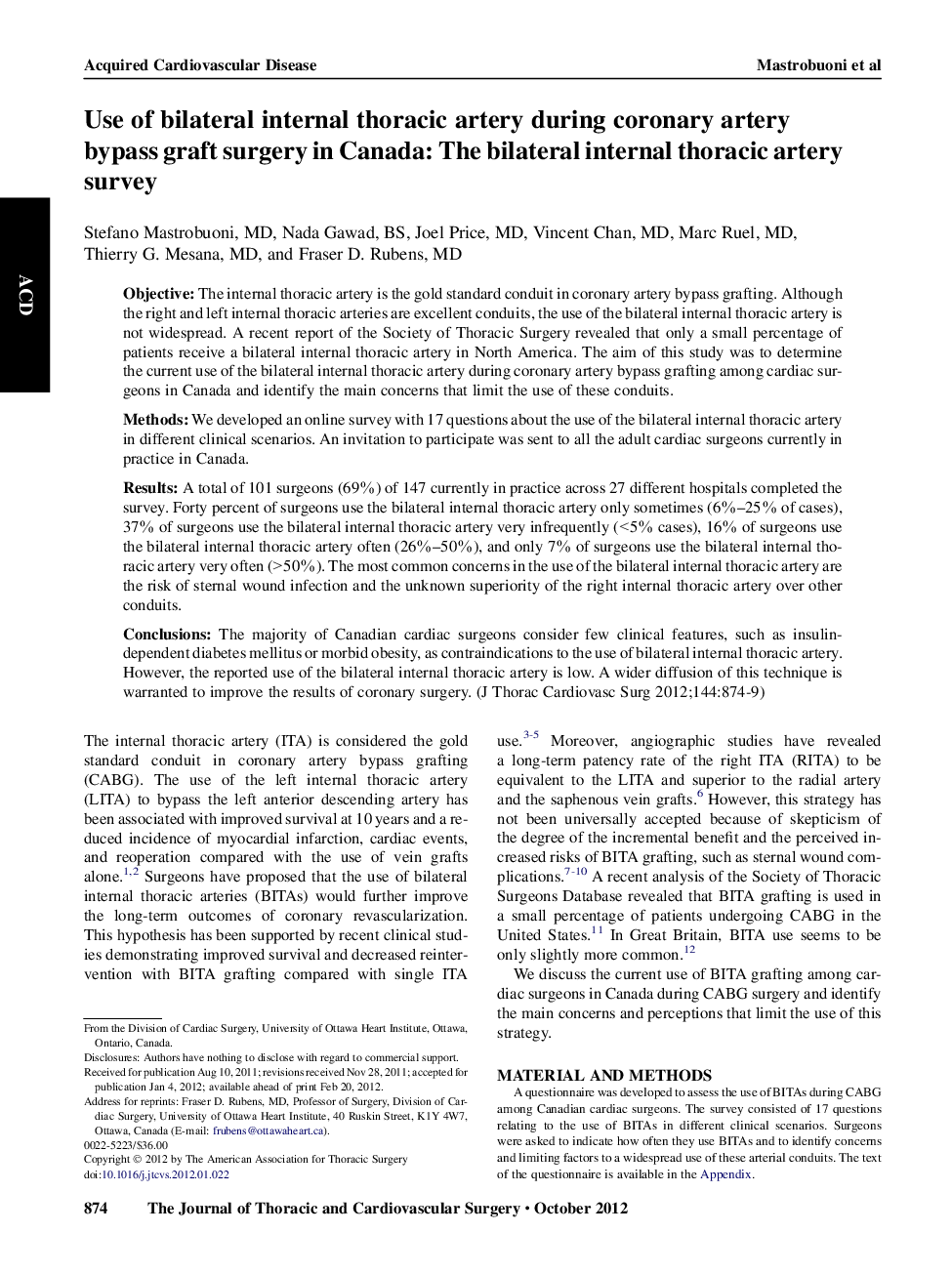| Article ID | Journal | Published Year | Pages | File Type |
|---|---|---|---|---|
| 2980983 | The Journal of Thoracic and Cardiovascular Surgery | 2012 | 6 Pages |
ObjectiveThe internal thoracic artery is the gold standard conduit in coronary artery bypass grafting. Although the right and left internal thoracic arteries are excellent conduits, the use of the bilateral internal thoracic artery is not widespread. A recent report of the Society of Thoracic Surgery revealed that only a small percentage of patients receive a bilateral internal thoracic artery in North America. The aim of this study was to determine the current use of the bilateral internal thoracic artery during coronary artery bypass grafting among cardiac surgeons in Canada and identify the main concerns that limit the use of these conduits.MethodsWe developed an online survey with 17 questions about the use of the bilateral internal thoracic artery in different clinical scenarios. An invitation to participate was sent to all the adult cardiac surgeons currently in practice in Canada.ResultsA total of 101 surgeons (69%) of 147 currently in practice across 27 different hospitals completed the survey. Forty percent of surgeons use the bilateral internal thoracic artery only sometimes (6%–25% of cases), 37% of surgeons use the bilateral internal thoracic artery very infrequently (<5% cases), 16% of surgeons use the bilateral internal thoracic artery often (26%–50%), and only 7% of surgeons use the bilateral internal thoracic artery very often (>50%). The most common concerns in the use of the bilateral internal thoracic artery are the risk of sternal wound infection and the unknown superiority of the right internal thoracic artery over other conduits.ConclusionsThe majority of Canadian cardiac surgeons consider few clinical features, such as insulin-dependent diabetes mellitus or morbid obesity, as contraindications to the use of bilateral internal thoracic artery. However, the reported use of the bilateral internal thoracic artery is low. A wider diffusion of this technique is warranted to improve the results of coronary surgery.
